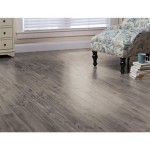How To Decorate the Entryway of a Home
The entryway serves as the initial impression of a home, offering a preview of the interior style and setting the tone for the overall aesthetic. A well-decorated entryway can be both functional and visually appealing, creating a welcoming atmosphere for residents and guests. This article will explore various strategies and considerations for effectively decorating a home's entryway.
Assessing the Space
Before embarking on any decorating project, it's essential to assess the available space. Measurements should be taken to determine the dimensions of the entryway, including ceiling height, wall length, and width. This information will be crucial when selecting furniture and decor that fit comfortably within the area without feeling cramped or overwhelming. The architectural style of the home should also be taken into consideration, as the entryway decor should complement the overall design.
Choosing a Color Palette
The color palette chosen for the entryway can significantly impact the atmosphere. Light and neutral colors can create a sense of airiness and spaciousness, particularly in smaller entryways. Bold and saturated colors can make a statement and create a more dramatic entrance. The chosen color palette should harmonize with the adjacent rooms to ensure a cohesive flow throughout the home.
Selecting Appropriate Furniture
Functionality is key when choosing furniture for the entryway. A console table or bench offers a practical surface for placing keys, mail, and other small items. If space allows, a small chair or stool can provide a convenient place to sit while putting on or taking off shoes. Storage solutions, such as coat racks, shelves, or baskets, can help keep the entryway organized and clutter-free. The size and scale of the furniture should be proportional to the size of the entryway.
Utilizing Lighting Effectively
Lighting plays a vital role in creating a welcoming and functional entryway. A well-lit entryway can make the space feel brighter and larger. Natural light should be maximized whenever possible. If natural light is limited, consider incorporating a combination of ambient, task, and accent lighting. A pendant light or chandelier can serve as a focal point, while wall sconces or table lamps can provide softer, more diffused light. A well-placed mirror can also help reflect light and create a sense of depth.
Incorporating Decorative Elements
Decorative elements can add personality and style to the entryway. A rug can define the space and add warmth and texture. Artwork, photographs, or mirrors can be hung on the walls to create visual interest. Plants can introduce a touch of nature and vibrancy to the space. Decorative accessories, such as vases, sculptures, or bowls, can add personality and character.
Creating a Focal Point
A focal point can draw the eye and create a sense of visual interest in the entryway. This could be a striking piece of furniture, a large piece of artwork, a statement mirror, or a dramatic lighting fixture. The focal point should be strategically placed to create a sense of balance and harmony within the space. It should also be visually appealing and reflective of the overall style of the home.
Maximizing Storage Space
Entryways are often prone to clutter, making storage solutions essential. Utilizing vertical space with shelves or wall-mounted hooks can help maximize storage capacity without taking up valuable floor space. A storage bench or ottoman can provide a hidden compartment for storing shoes, scarves, and other accessories. Baskets and containers can be used to corral smaller items and maintain a tidy and organized appearance.
Considering the Flow of Traffic
The entryway should be designed to facilitate the smooth flow of traffic. Furniture and decor should be arranged in a way that allows for easy movement through the space. Walkways should be clear of obstructions, and there should be ample space for opening and closing doors. The layout should feel natural and intuitive, promoting ease of movement and accessibility.
Personalizing the Space
The entryway should reflect the personality and style of the homeowner. Incorporating personal touches, such as family photos, travel souvenirs, or favorite artwork, can make the space feel more welcoming and inviting. These personal elements can create a sense of warmth and individuality, transforming the entryway into a true reflection of the home's occupants.
Maintaining a Clean and Organized Space
Regular cleaning and organization are crucial for maintaining a welcoming and functional entryway. Surfaces should be dusted and wiped down regularly, and floors should be swept or vacuumed. Clutter should be minimized by regularly purging unnecessary items and utilizing storage solutions effectively. A clean and organized entryway creates a positive first impression and contributes to a more peaceful and enjoyable living environment.

Entryway Decor 10 Ways To Make A Great First Impression Decorilla
:strip_icc()/cdn.cliqueinc.com__cache__posts__222260__-222260-1492899823774-image.700x0c-a26ba55479df4783af9a79156e63d53f-73bb9a581aba4e6b93a57c61ad72dd95.jpg?strip=all)
29 Entryway Ideas That Make A Stunning First Impression

Small Entryway Design Ideas

Foyer Ideas Entry Hall Decor 15 Ways To Make A Great Entrance Bob Vila

Entryway Decor Ideas For Fall Home She Gave It A Go

6 After Winter Foyer Decorating Ideas

21 Beautiful Entryway Ideas To Copy This Year Decor Small Wall Apartment

21 Beautiful Entryway Ideas To Copy This Year Home Entrance Decor Modern

25 Stylish Entryway Ideas Modern Foyer Decorating

25 Stunning Entryway Decor Ideas To Take Your Home The Next Level May Ray
Related Posts







